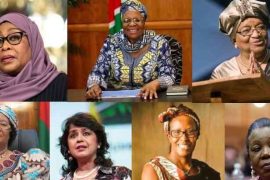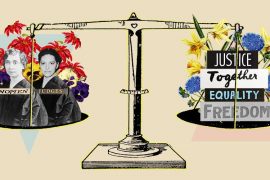The recent idea of establishing universities specifically for women in Turkey, which was suggested by President Recep Tayyip Erdoğan, received full support from scholars, who interpreted the act as a move that should be made as soon as possible.
“As a female academic, I believe that it is a quite good idea. Turkish women should be more modern, educated and equipped. These women’s universities are a great opportunity for that purpose,” said professor İlkay Erdoğan Orhan, the dean of the Faculty of Pharmacy at Gazi University.
Speaking to Sabah daily on the matter, Orhan said there are many fields where women are needed the most. “In my opinion, it is very beneficial for women to be experts in these areas,” she noted, adding that across the world, there are various women’s universities.
Visiting Japan last week to attend the G20 summit, Erdoğan delivered a speech at a Mukogawa Women’s University where he received an honorary doctorate. During his speech, the president indicated that Turkey will use Japan as an example for the country’s women’s universities and will establish similar ones. He even called on the head of the Board of Higher Education (YÖK) to start such initiatives.
Currently, there are more than 80 women’s universities and colleges in Japan, where higher education is provided to female students. Most of these universities are private universities, although some receive funding from the state as well. Yet, women’s universities are not just available in Japan. Many countries have women’s universities, including the U.S. with 34.
Hacı Bayram University Faculty of Communication Dean Zakir Avşar pointed out that this kind of higher education concept is not new for Turkey.
“There were ‘İnaf Schools’ in the Ottoman era. This is a concept that we [Turkey] have had for 700 years,” Avşar said, adding that with the foundation of the republic, many other women-only schools have been established specific to each profession, such as women’s teaching schools and women’s technical schools.
“These schools and the women who have been trained in these schools have contributed to the development of the republic and today’s modern intellectual women,” Avşar asserted.
Avşar also indicated that it is not fair to interpret the issue as an end to coeducation. “These are the schools that [the founder of the republic Mustafa Kemal] Atatürk gave major significance and marked their stamp on an era,” he said.
According to figures released by the Turkish Statistical Institute (TurkStat) in March, women, who make up 49.8 percent of the population, do not fare better than other women in the world in terms of employment. Still, the proportion of women in upper and middle-level management positions was 17.3 percent, TurkStat reported, based on 2017 statistics. Unfortunately, the female employment rate was less than half of the male employment rate, according to figures from 2017, the latest year with available statistics. The employment rate for men was 65.6 percent, while it was only 28.9 percent for women. Statistics show that the higher the educational status of a woman, the more likely she is to participate in the labor force. The labor force participation rate for women who graduated from universities was 72.7 percent, while it was only 27.7 percent for those who only completed high school. The highest female employment rate was in the service sector. It was lower in industry and agriculture compared to men.
Source: Daily Sabah





Comments are closed.